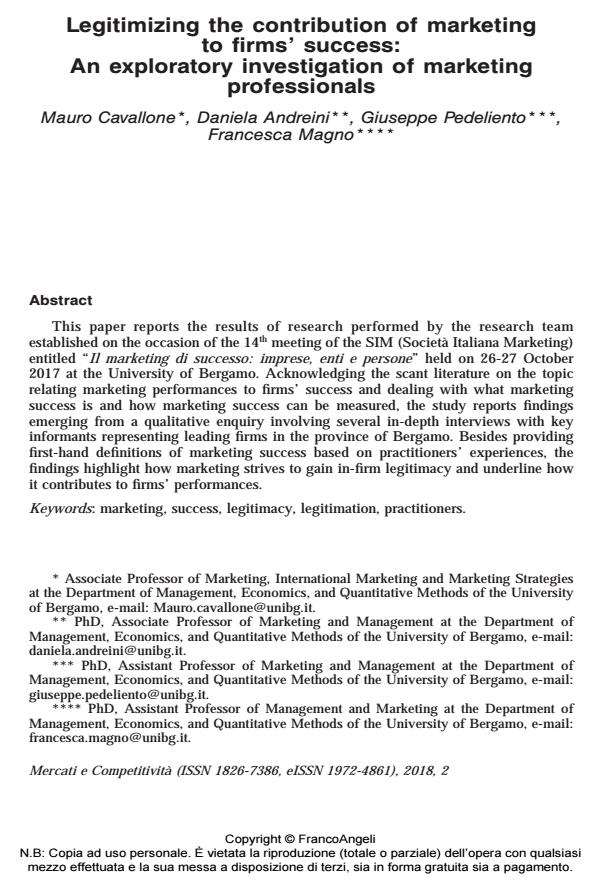Legitimizing the contribution of marketing to firms’ success: An exploratory investigation of marketing professionals
Journal title MERCATI & COMPETITIVITÀ
Author/s Mauro Cavallone, Daniela Andreini, Giuseppe Pedeliento, Francesca Magno
Publishing Year 2018 Issue 2018/2
Language English Pages 22 P. 15-36 File size 469 KB
DOI 10.3280/MC2018-002002
DOI is like a bar code for intellectual property: to have more infomation
click here
Below, you can see the article first page
If you want to buy this article in PDF format, you can do it, following the instructions to buy download credits

FrancoAngeli is member of Publishers International Linking Association, Inc (PILA), a not-for-profit association which run the CrossRef service enabling links to and from online scholarly content.
This paper reports the results of research performed by the research team established on the occasion of the 14th meeting of the SIM (Società Italiana Marketing) entitled "Il marketing di successo: imprese, enti e persone" held on 26-27 October 2017 at the University of Bergamo. Acknowledging the scant literature on the topic relating marketing performances to firms’ success and dealing with what marketing success is and how marketing success can be measured, the study reports findings emerging from a qualitative enquiry involving several in-depth interviews with key informants representing leading firms in the province of Bergamo. Besides providing first-hand definitions of marketing success based on practitioners’ experiences, the findings highlight how marketing strives to gain in-firm legitimacy and underline how it contributes to firms’ performances.
Keywords: Marketing, success, legitimacy, legitimation, practitioners.
Mauro Cavallone, Daniela Andreini, Giuseppe Pedeliento, Francesca Magno, Legitimizing the contribution of marketing to firms’ success: An exploratory investigation of marketing professionals in "MERCATI & COMPETITIVITÀ" 2/2018, pp 15-36, DOI: 10.3280/MC2018-002002